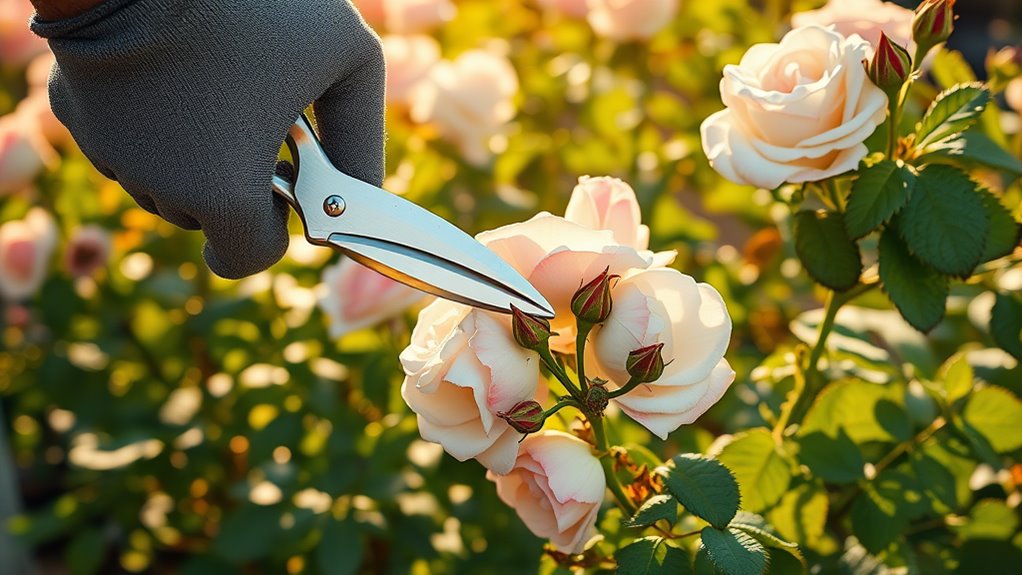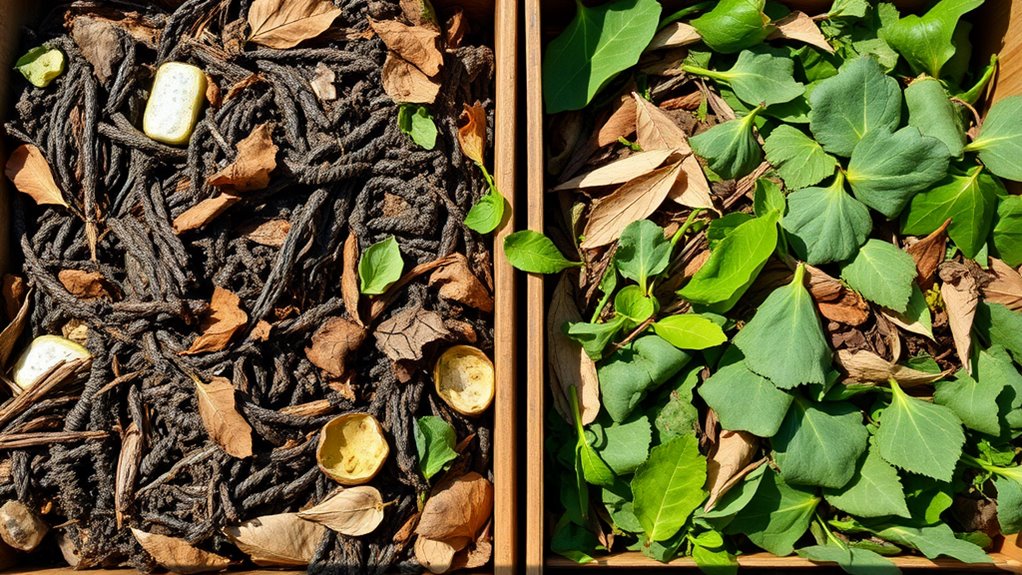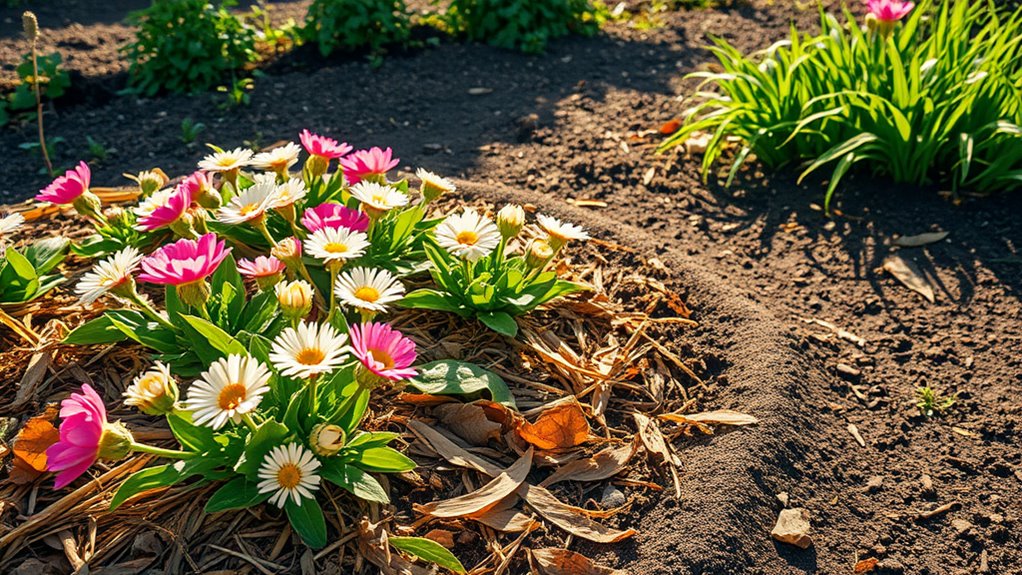This One Pruning Habit Changed My Garden Forever
You can transform your garden just like I did with this one simple habit: pruning every two weeks. Focus on precise cuts at 45-degree angles to remove dead branches, boosting new growth and air circulation while cutting down pests and diseases. It’s easy and effective, leading to lush, productive plants. Stick with it, and you’ll uncover more ways to keep your garden thriving year-round.
Key Takeaways
- Adopt a bi-weekly pruning routine to stimulate consistent growth and vitality in your garden.
- Make precise 45-degree cuts with sharp tools to ensure quick healing and prevent infections.
- Remove dead or crossing branches to enhance air circulation and reduce pest risks.
- Track pruning in a journal to adapt techniques based on seasonal changes and plant needs.
- Combine regular pruning with proper tools and care to boost yields and garden aesthetics long-term.
The Revolutionary Pruning Technique
You’ve probably heard of various pruning methods, but this one technique stands out for its efficiency in revitalizing your garden.
Based on straightforward methodology, this approach is accessible to both novice and experienced gardeners.
This revolutionary pruning habit focuses on timing and precision: you schedule regular sessions, say every two weeks, to remove dead or crossing branches with sharp tools.
Actively observe your plants’ growth patterns, making clean cuts at 45-degree angles to promote healing.
Establish this as a routine habit by tracking it in a journal, ensuring you adapt to seasonal changes without overdoing it.
You’ll maintain plant health through disciplined, hands-on care that keeps everything balanced and thriving.
By combining this habit with three essential pruning techniques, you can significantly enhance your garden’s growth rate.
Benefits of Consistent Pruning
By maintaining a consistent pruning schedule, you’ll quickly notice how it boosts your garden’s overall health. Regular pruning promotes vigorous growth by eliminating dead wood, allowing plants to redirect energy efficiently. It enhances air flow to ward off diseases, stimulates more blooms and fruits for abundant harvests, and maintains shape for a tidy, resilient landscape. This practice prevents overcrowding and ensures long-term vitality without excess effort. For tomato plants, adopting these techniques can lead to a 50% increase in yield, as supported by effective pruning methods. Incorporating expert insights into your routine can help you achieve even better results by drawing on proven strategies for plant optimization.
| Benefit | How It Helps Your Garden |
|————————|————————————-|
| Promotes new growth | Stimulates stronger, healthier shoots|
| Improves air circulation| Reduces disease and pest vulnerability|
| Boosts productivity | Increases flowers and yields |
| Enhances aesthetics | Creates a neat, vibrant garden space
Essential Tools for Pruning Success
To achieve effective pruning, arm yourself with the right tools for precision and safety. Essential items include sharp bypass pruners for clean cuts on stems up to 1/2 inch; they’ll minimize damage and promote healing.
For thicker branches up to 2 inches, use loppers with long handles to reduce strain and improve leverage. A curved pruning saw handles larger limbs efficiently, slicing through wood with ease. Together, these tools are among the top five must-have for any gardener.
Don’t forget thick gloves and safety glasses to protect your hands and eyes. Keep your tools sharpened and oiled; this prevents rust, ensures clean cuts, and extends their lifespan for reliable performance.
Using these tools effectively allowed me to adopt the specific pruning habit that transformed my garden into a thriving oasis.
Identifying Plants Ready for Pruning
How can you tell if your plants are ready for pruning? Examine your plants for dead or dying stems, which no longer contribute to health.
If branches are crossing, rubbing, or overcrowded, they’re signaling the need for attention. Assess the plant’s shape; leggy growth or imbalance often indicates readiness. Managing garden pests early can help ensure your plants are in optimal condition before pruning.
Consider seasonal cues, like post-flowering for shrubs or winter dormancy for trees. Check for disease signs, such as spots or wilting, but ensure the plant isn’t stressed by pests or weather.
This precise evaluation helps you maintain vigor without unnecessary intervention. By understanding timing tips, you can debunk common pruning myths and promote healthier growth.
Step-by-Step Pruning Methods
Once you’ve identified plants ready for pruning, you’ll tackle the task with these proven methods, starting with the right tools and techniques.
Grab sharp, clean bypass pruners for small branches and loppers for thicker ones; always sanitize them first.
Begin by removing dead or diseased wood at the base, then thin out crowded areas to improve air flow.
Make angled cuts just above a bud or lateral branch to encourage new growth.
For shrubs, shape evenly while maintaining natural form.
Work methodically from top to bottom, stepping back to assess progress and ensure balance.
This approach boosts plant health and vigor.
To enhance your garden’s overall vitality, incorporate deadheading as part of this routine, aiming for one session per week to keep flowers thriving and beautiful. By practicing deadheading techniques, you can achieve bigger and more abundant blooms throughout the growing season.
Avoiding Typical Pruning Errors
While even experienced gardeners make mistakes, you’ll safeguard your plants’ health by steering clear of common pruning errors, such as cutting too close to the trunk or pruning at the wrong time of year.
Don’t over-prune, as it weakens plants and invites disease—aim to remove no more than 25% of growth at once. Always use sharp, clean tools to prevent tears that lead to infections.
Check your plant’s specific needs; for instance, avoid pruning spring bloomers in fall. By focusing on these basics, you’ll minimize damage and maintain vitality effortlessly. Recognize signs of overwatering to keep your plants healthy.
Additionally, overwatering plants is another frequent gardening mistake that can cause root rot and hinder overall plant health.
Enhancing Plant Growth Through Pruning
Proper pruning boosts your garden’s vitality by strategically removing parts that hinder growth, allowing plants to redirect energy toward stronger branches and blooms. You’ll notice improved light penetration and air flow, which enhance photosynthesis and reduce disease. By cutting away dead wood, you’re stimulating new growth and shaping plants for better health. Here’s a breakdown of key techniques:
| Technique | Benefit | Tip |
|---|---|---|
| Pinching | Promotes denser foliage | Use fingers on tips |
| Thinning | Boosts air circulation | Remove select branches |
| Heading | Encourages new shoots | Cut above outward buds |
Applying these methods ensures your plants thrive with minimal effort.
Pruning by Season and Climate
You prune your plants in the best seasons to encourage healthy growth and minimize stress.
Adapting your techniques to your local climate ensures you avoid frost damage or excessive heat exposure.
Now, consider how seasonal timing and weather patterns shape your pruning routine for optimal results.
Best Seasons for Pruning
As seasons shift, pruning your garden plants at the optimal time boosts their health and vigor.
In spring, you stimulate new growth by pruning most deciduous trees and shrubs before buds swell.
Summer-flowering plants, like hydrangeas, thrive when you prune them right after blooming to encourage future flowers.
For summer, light trimming keeps evergreens neat and removes dead wood without stressing the plant.
In fall, you prepare perennials by pruning after flowering, promoting root strength for winter.
Winter is ideal for dormant pruning on fruit trees, minimizing disease risk and maximizing spring blooms.
Always tailor timing to your plants’ needs for optimal results.
Adapting to Climate
Climate variations shape how you adapt pruning schedules, extending beyond standard seasonal advice to account for local weather patterns.
In arid regions, you prune during milder periods to reduce water stress and sun damage. For humid climates, avoid wet seasons to minimize fungal risks—timing cuts for dry spells keeps diseases at bay.
You’ve got to monitor temperature extremes; in cold areas, delay pruning until frost risk passes, promoting robust regrowth. This tailored approach boosts plant resilience, ensuring your garden thrives despite unpredictable weather.
Track local forecasts and adjust yearly for optimal results.
Real Garden Transformations
Transforming a garden often begins with strategic pruning, turning neglected spaces into thriving retreats.
You’ve likely seen overgrown shrubs become sculpted focal points, freeing up light and air for understory plants to flourish. By removing dead or crossing branches, you encourage vigorous new growth, transforming a tangled mess into a balanced, productive haven.
Imagine your perennials blooming more profusely, pests diminishing as airflow improves, and pathways clearing for easier access.
This habit revitalizes your space, making it a personal sanctuary that reflects your vision and effort, yielding immediate, tangible rewards.
Long-Term Care After Pruning
Once you’ve finished pruning, you’ll need to monitor your plants regularly to sustain their health and vigor. This involves checking for pests, diseases, and nutrient issues weekly, adjusting watering to maintain even soil moisture, and applying fertilizer seasonally to boost growth. Keep an eye on new shoots and remove dead wood promptly to prevent problems. For a structured approach, use this table:
| Task | Frequency |
|---|---|
| Pest Inspection | Bi-weekly |
| Disease Monitoring | As needed |
| Watering | Weekly |
| Fertilizing | Monthly |
| Mulching | Annually |





